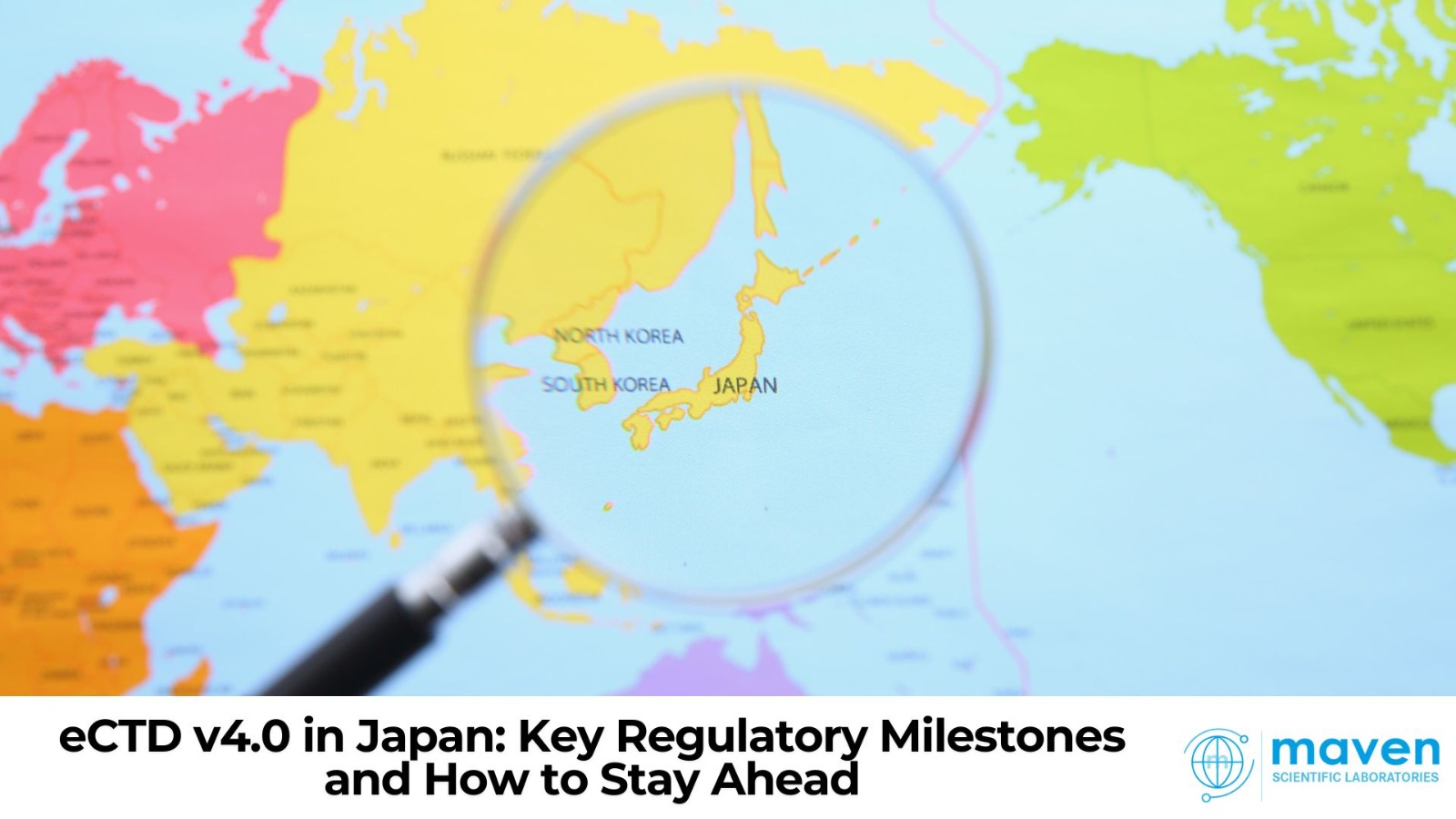eCTD v4.0 in Japan: Key Regulatory Milestones and How to Stay Ahead
August 06, 2025
Japan’s PMDA (Pharmaceuticals and Medical Devices Agency) is making it mandatory to move to eCTD version 4.0 by 2026. This means pharma companies must upgrade their submission systems.
The shift from v3.2.2 to v4.0 brings big improvements:
- A single XML structure for all submissions
- Better use of metadata (tags that explain documents)
- Unique IDs (UUIDs) for document reuse
- Easier navigation and tracking for reviewers
- Automated checks and submission tracking
Starting early will help companies avoid risks and stay aligned with global rules.
Why eCTD v4.0 Matters in Japan
- Pilot projects started in 2021
- Voluntary submissions accepted since 2022
- Mandatory from 2026
Key improvements:
- Stronger control over document lifecycle
- Document reuse with UUIDs
- Easier reviewer navigation and traceability
- Automated validation
How Maven Helps with eCTD v4.0
Maven supports companies with both technology and consulting:
- Automated publishing with metadata
- Full document lifecycle control
- Vocabulary alignment with PMDA & ICH rules
- Real-time validation and monitoring
4-Phase Plan for Compliance
Phase 1: Planning & Setup (3–6 months before)
- Check if RIMS/DMS systems support HL7 RPS
- Confirm UUID and metadata functions
- Update SOPs to PMDA guidance
- Train staff across teams
- Use Maven’s tools for rule updates
Phase 2: System Integration & Testing (2–3 months before)
- Connect Maven tools with company systems
- Test metadata sync end-to-end
- Run mock submissions per PMDA rules
- Check consistency of controlled vocabulary
Phase 3: Document Prep & Metadata Mapping (1–2 months before)
- Use Japan-specific document templates
- Add UUIDs and metadata tags
- Prepare CTD modules with clear metadata:
- XML summaries
- Tagged CMC data and stability info
- Valid hyperlinks and study grouping for non-clinical data
- Clinical tables in PMDA format
Phase 4: Final Submission (1–4 weeks before)
- Audit UUIDs and remove unused links
- Generate audit trails (21 CFR Part 11)
- Run final validation with Maven tools
- Submit via PMDA Gateway and track in real-time
Fixing Weaknesses in v3.2.2
|
Old (v3.2.2) |
New (v4.0) |
|
Separate modules 1 & 2–5 |
Single XML submission unit |
|
Fixed metadata (DTD) |
Flexible schema with tags |
|
No document reuse |
UUID-based reuse across sequences |
|
Manual checks |
Automated validation |
|
Static document order |
Dynamic sequencing with metadata |
Key Features of v4.0 (and Maven’s Support)
- Context-of-Use metadata → Easier navigation for reviewers
- Document reordering → Clearer dossier flow
- Study group organization → Better clinical/non-clinical structure
- Content reuse → Saves time in updates
- Real-time vocabulary updates → Fewer errors
- AI validation tools → Faster readiness
- Submission monitoring → Live tracking and issue alerts
Global Compliance Timeline
|
Region |
Voluntary |
Mandatory |
|
Japan (PMDA) |
2022 |
2026 |
|
EU (EMA) |
2024 |
2026 |
|
US FDA |
2024 |
2028–2029 |
|
Health Canada |
2024 |
2026–2027 |
Conclusion
The PMDA’s move to eCTD v4.0 is not just about meeting rules. It’s a chance to:
- Modernize systems
- Improve data accuracy
- Speed up submissions
Companies that act early will avoid risks and stay competitive.
With Maven’s help, sponsors can:
- Automate workflows
- Improve accuracy and traceability
- Reuse content across submissions
- Be fully ready for Japan’s 2026 deadline
Early planning and smart tools will keep companies ahead in Japan’s fast-changing regulatory world.


Post a comment